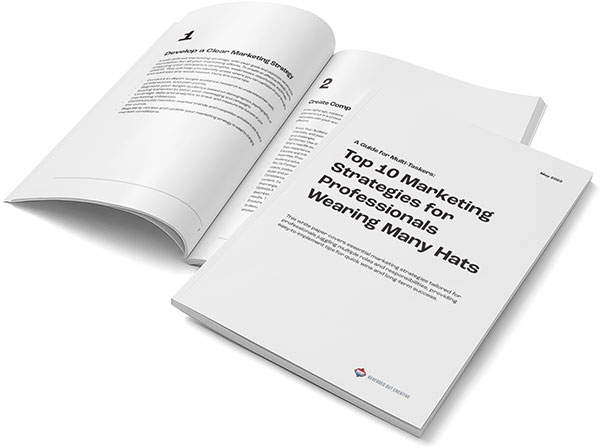
Some blog articles are published daily, a video is made every week and there are several image-based content initiatives like infographics and charts in the works at your organization. However, how does your content marketing affect your business?
What is the value of all that content to your business? What is the effect on your company’s image? A lot of people start creating material as soon as they hear “you need to do this.” To be honest, creating content is pointless if you don’t know how much of an impact it will have or even if you don’t know what kind of impact it should have.
KPI #1: Visitors To The Site
KPI (key performance indicator) number one in content marketing is the number of posts. What percentage of your blog’s visitors are new? Is there an upward or downward trend in that number? What are the most popular articles on your site? It’s helpful to know how many unique visitors your material attracts in order to properly gauge its popularity.
If you want your material to be seen by more people over time, you need to get more unique visitors this month than you did the month before that.
Segmenting your visitors by channel is a great way to get even more actionable information about your traffic volume.
You’ll want to keep an eye on the likes of :
- Unpaid visitors
- Traffic that comes from other sources
- Social media traffic
- Pay-per-click
- Email exchanges
You’ll want to keep an eye on organic traffic when it comes to content. As a result, organic traffic has been elevated to the status of our second-most critical content KPI. A content marketing company in Cincinnati can help you drive traffic to your website and increase visibility.
KPI #2: Organic Traffic
A well-written piece of content can have a positive impact on your website’s search engine optimization (SEO). You should choose a different term for each new blog post to focus on. You can expect to see an increase in organic traffic as a result of this strategy.
Track organic traffic to your content on a regular basis. Keep an eye on your content’s position in search engine results pages (SERPs) with SEO tools like Moz or SEMrush.
In this manner, if some of your organic ranks begin to decline, you’ll be able to pinpoint where to focus your SEO efforts.
KPI #3: Time on Page
You need to know how many people are visiting your site, but that doesn’t tell you everything. Having a lot of visitors isn’t a good thing if they leave after a few seconds of browsing. That’s why you need to keep track of your page time. This lets you get a better sense of how well your content is attracting and retaining readers. Keeping tabs on how long visitors spend on each page of your site will help you determine what kind of material is most effective at keeping them there.
Does this imply that the content in the last column is subpar? It’s not always the case. Is there anything that can be done at the beginning of your article that would make it more relevant to your readers and encourage them to read on?
KPI #4: Bounce Rate
Having a high bounce rate indicates that a large percentage of visitors leave your site without exploring further. More people stay on your site if there is a lesser bounce rate. Having a high bounce rate on a piece of content may indicate that it requires a stronger call to action at the conclusion to keep visitors on your site. As with time on site, bounce rate is a metric you’ll want to monitor on a page-by-page basis.
There is a high bounce rate of 17.65% on this page. Which part of that content is so effective in sending readers to other sites? Is it focused on a hot-button issue? Focus on a specific type of audience? Do you have any useful links towards the end of the post? Your winning postings need to be studied to see what they’re doing properly. Use these techniques to improve your other content, and see whether they work.
KPI #5: Social Shares & Interaction
There are several places to find social shares, including social networks (Facebook, Twitter, etc.)
A content marketing metric we discussed was tracking organic traffic. In addition to SEO, there are other methods for increasing the number of people that visit your website. Your social shares and engagement are also important metrics to monitor.
Some of your material will get more attention than others on social networks like Facebook as you create and post more frequently. Those are undoubtedly the most popular themes among the people who read your blog.
With a content marketing company in Cincinnati, your content strategy will get more refined as you have a better understanding of what kind of content your target audience likes. You’ll be able to target them more effectively and increase your overall impact.
KPI #6: Conversion Rate
Visitors aren’t the only ones who benefit from high-quality material. It aids in establishing your authoritative status by enhancing your reputation and clearly articulating the benefits of your offering. Your conversion rate is a good indicator of this. Each firm has a different set of conversions that are crucial to them. Is there a correlation between the number of people who read your material and the number of people who buy your products? What kind of material has had the biggest impact on your business’s bottom line?
Newsletter signups or white paper downloading may be the emphasis of certain other companies. Others may wish to track phone conversations that are initiated as a result of the content you’ve provided. A call-tracking solution like Dialogtech or CallRail can help you track calls back to their source of origin: organic traffic.
This is a vital measure to keep an eye on because it allows you to gauge the financial impact of your content marketing efforts.
KPI #7: Authority & Confidence
You’re providing value to your visitors when you make relevant, helpful information available in the form of dynamic content, on-site content, and free downloads. To put it another way, you’re demonstrating to them that you value their business and aren’t just out to make a buck. To make the most out of your marketing budget and efforts, you can choose a content marketing company in Cincinnati.
In turn, your company’s authority, trust, and reputation will grow with your clients. This is a difficult question to answer. The best way to measure this KPI is to use qualitative methods like polls and surveys. The greatest approach to determine how much trust, goodwill, and credibility your material is building with your client base is to conduct regular interviews with your customers.
Conclusion
The bottom line is influenced by content. Make it a habit to track your content’s revenue and growth using analytics. Gather your team and compile a comprehensive report on your content marketing strategy’s key performance indicators (KPIs). Make use of the most important metrics!
Contact Us
At Reversed Out Creative, we understand the challenges and opportunities presented by AI disruption. Our team of experts specializes in web design, SEO, graphic design, and digital marketing services. Reach out to us through our contact form to learn more about navigating the evolving job market and embracing the potential of AI. Together, let’s shape a future that combines human ingenuity with the power of AI.
Next Article: The Four Pillars of Relevancy: How Can Digital PR Campaigns Lead to Profits?
©2024 Reversed Out LLC. All rights reserved. Privacy Policy.


